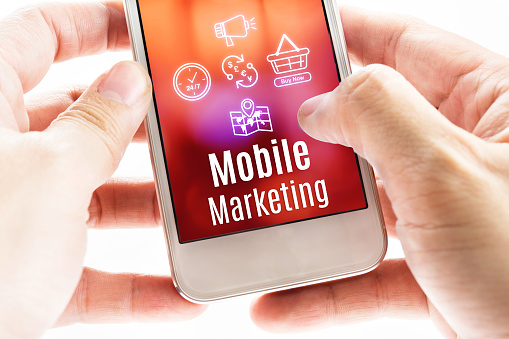By Gary Cowan
It’s easy to see we’re in the midst of a monumental technology revolution. Just look around any airport, waiting room or coffee shop and you’re bound to see the majority of people looking at their smartphones. Today, 64% of Americans and a whopping 80% of online adults now own smartphones. And for some, smartphones have even replaced PCs, as these devices have become the sole way they access the Internet.
In our mobile era, people are using phones for many reasons, not least of which is shopping. Major retailers spend millions with ad agencies targeting their customers with ads and promotions on their mobile phones. While many small businesses have heard about mobile marketing and understand their customers are becoming increasingly connected through their devices, they don’t yet know how to reach them and truly ‘mobilize’ their business. As a result, few small businesses have tapped into this exploding market opportunity and mobile marketing largely remains in the domain of large businesses with deep pockets.
The good news for small businesses is that the landscape is rapidly changing. A whole universe of marketing solutions, analytics technologies and cloud software is effectively democratizing mobile marketing and leveling the playing field for small businesses. Now, it’s really up to small businesses to educate themselves about the ways they can attract their mobile customers so they can jump in, too.
For small businesses looking for a starting point, here are five ways they can begin engaging with their mobile customers in a meaningful way:
- Make it easy for mobile customers to find you – A mobile website certainly provides a better experience for smartphone customers when they visit your site from their phones, but perhaps more importantly, also makes your business more discoverable. Google’s new search algorithm ranks mobile-friendly websites higher in search results conducted by mobile phones. So, if you don’t have a mobile-enabled website, your prized mobile customers may not even find your business when they’re searching and evaluating their shopping options.
- Reach customers when they’re nearby – Research shows that customers are more likely to come into your store and make a purchase when they’re in the neighborhood. As a result, digital ads that are geo-targeted are much more effective because customers hear about your business at the right time – when they’re in the area. More sophisticated geo targeting can also intelligently adapt to the specific needs of your business. For example, a fast food digital ad may be optimized to reach customers when they are within a radius of one mile, whereas an oil and lube service center may see the best results when targeting customers within five miles.
- Don’t forget the coupon – People on devices are looking for deals and digital coupons can draw customers into your business when they might otherwise shop elsewhere. In fact, 96% of mobile users and 70% Millennials will search for coupons on their phones, not their desktop. Coupons also allow a small business to be found more easily on a smartphone or device, and businesses will ultimately get more value from their online ad investments when ads are accompanied with coupons.
- Leverage the power of social networks – Social media represents a huge opportunity to reach mobile customers as they travel through these networks on their phones. In a recent survey, 42% of marketers already use Facebook to promote their business. Now, small businesses can also follow mobile users on their online journey and remind them about the business website they visited through retargeted digital ads. These ads remind consumers who are on Facebook, for example, about your business, so they reinforce the initial website visit experience and help convert online browsers into paying customers over time.
- Harness the power of video – Most people prefer to watch videos over reading text. So, if you create a video summarizing the key appeal of your business, you’re more likely to engage prospective customers. Mobile technology has improved to such an extent that watching video on a phone is no longer the frustrating experience that it once was, making video content a powerful addition to your mobile marketing options. Today, 50 million people now use smartphones and devices to watch video content. Video makes your mobile website more compelling, grabs attention across social media networks and enhances the impact of other advertising investments. And don’t forget to post your video on YouTube to reach even more mobile customers.
Let’s face it, running a small business is not a pursuit for the faint-hearted. Small business owners wear many different hats at any given time and keeping up with new technologies can be a daunting task. However, the prevalence of mobile devices has created a sea change in the way consumers make the majority of their shopping decisions, representing a real opportunity for small businesses. The time is now to get in the game by embarking on few basic mobile strategies, so you can reach your mobile customers where they now live: on their phones and devices.
Gary Cowan is a senior vice president at the leading mobile marketing automation company, DataSphere, a company that provides sophisticated targeting and campaign management for local businesses. Gary has helped many small businesses develop mobile marketing strategies and reap new business benefits. Prior to joining DataSphere, Gary was Director of Search Traffic at Amazon and also worked at Microsoft in the MSN division (now called Bing).







